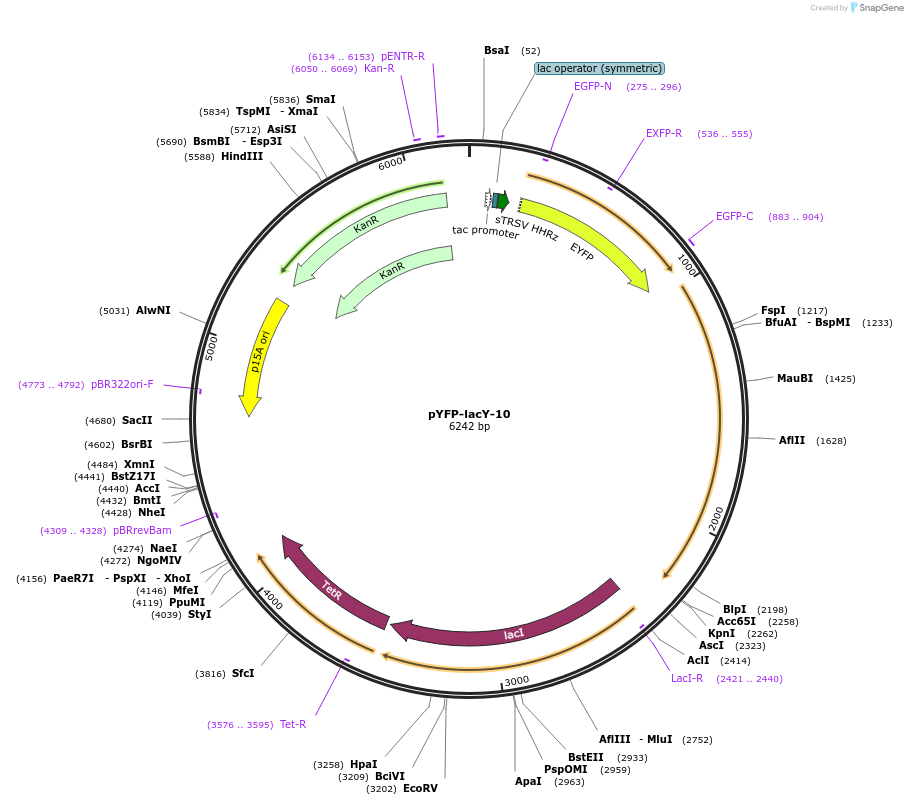pYFP-lacY-10
(Plasmid
#140139)
-
PurposeEvaluating the impact of feedback and high sensor concentration on information transmission of a genetic sensor.
-
Depositing Lab
-
Sequence Information
Ordering
| Item | Catalog # | Description | Quantity | Price (USD) | |
|---|---|---|---|---|---|
| Plasmid | 140139 | Standard format: Plasmid sent in bacteria as agar stab | 1 | $89 | |
Backbone
-
Vector backbonepAN1818
- Backbone size w/o insert (bp) 4938
- Total vector size (bp) 6241
-
Modifications to backboneRBS of encoded lacI is changed to increase translation ~10-fold
-
Vector typeBacterial Expression
-
Selectable markersZeocin
Growth in Bacteria
-
Bacterial Resistance(s)Kanamycin, 50 μg/mL
-
Growth Temperature37°C
-
Growth Strain(s)MG1655dlac
-
Growth instructionsZeocin resistant
-
Copy numberLow Copy
Gene/Insert
-
Gene/Insert namelacY
-
Alt namelactose permease
-
Insert Size (bp)1254
-
Entrez GenelacY (a.k.a. b0343, ECK0340)
Cloning Information
- Cloning method Gibson Cloning
- 5′ sequencing primer ATCCGCCACAACATCGAGGACGGCAGCGTGCAG
- 3′ sequencing primer TCCGCCATCGCCGCTTCCACTTTTTCCCGCGTT
- (Common Sequencing Primers)
Resource Information
-
Supplemental Documents
Terms and Licenses
-
Academic/Nonprofit Terms
-
Industry Terms
- Not Available to Industry
Trademarks:
- Zeocin® is an InvivoGen trademark.
Depositor Comments
Please note that this plasmid may require a unique bacterial strain, so make sure to confirm that you can also obtain the appropriate growth strain. Please contact us at [email protected] or contact our distributors if you have any questions.
These plasmids were created by your colleagues. Please acknowledge the Principal Investigator, cite the article in which the plasmids were described, and include Addgene in the Materials and Methods of your future publications.
-
For your Materials & Methods section:
pYFP-lacY-10 was a gift from Drew Tack (Addgene plasmid # 140139 ; http://n2t.net/addgene:140139 ; RRID:Addgene_140139) -
For your References section:
Sparse estimation of mutual information landscapes quantifies information transmission through cellular biochemical reaction networks. Sarkar S, Tack D, Ross D. Commun Biol. 2020 Apr 30;3(1):203. doi: 10.1038/s42003-020-0901-9. 10.1038/s42003-020-0901-9 PubMed 32355194



